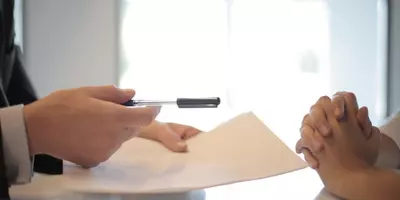
Oct 11, 2019 ● Kate Lopaze
3 old-school interview rules that are still relevant
It’s easy to see how job interviews have changed over time: more email, less formality, pre-interviews with chatbots, Skype interviews, etc. What’s not so easy is determining which interview principles are just as valid and necessary as ever, even as you prepare to job hunt in a modern world. Let’s look at some of the evergreen tips that are just as helpful now as they were when your parents and grandparents were interviewing for jobs.
Wear a suit or your interview best
Many workplaces are going full-on casual these days. All the same, this shouldn’t affect how you dress for the interview. Even if you’re 95% sure your interviewer will be wearing jeans and a hoodie, you should still plan to wear your interview suit—or at the very least, an above-average, impeccably clean and tailored outfit. If you get the job, there will be plenty of time to dress like your new colleagues. However, when you’re interviewing you still want to project the most professional and put-together image possible.
No one will think you’re a nerd for overdressing, I promise. But if you underdress, you run the risk of seeming unserious or unprepared. Better over than under, in this case.
Print your resume
This one may seem archaic—you likely emailed your resume to the company in the first place, so who needs paper copies? It’s still a good habit to keep. The old-school idea that you need to print your resume on the finest paper stock you can afford is no longer a must-do, but bringing copies shows you’re thoughtful and organized. Sure, the person interviewing you may be reading your resume on a screen or may already have their own printout, but if they don’t happen to have your resume right in front of them, it’s an immediate point in your favor that you came prepared. It’s also a subtle hint about the well-prepared employee you’d be—ready for everything.
This also applies if you’re doing an on-screen presentation. Always bring a few printouts (for every person you know will be there, plus a couple of extras just in case). Handouts help people follow along and also serve as a reminder all about you afterward as they’re evaluating how the interview/presentation went.
Send a thank-you note
Do you know what else never goes out of style? Polite thank you notes. (Your parents and grandparents were right about that, but you don’t have to tell them so.) An email or a follow-up text technically fits that bill in this fast-paced digital world, but sending a handwritten (or typed and hand-signed, since not all of us were blessed with great handwriting) note to your interviewers is an eternally classy move. Or you can do both if you’re worried about seeming like an ungrateful procrastinator: the quick email sent the same day, and the more traditional note following thereafter.
It’s a nice touch, and not only makes sure that you're back on the interviewer’s radar after you’ve left the office but also shows that you’re thoughtful and appreciative of the opportunity—this doesn’t need to be a retroactive sales pitch. A brief, on-point note that thanks people for taking the time to talk to you is likely to get a response along the lines of, “I knew I liked that guy for a reason!” There’s literally no downside to following up with a simple thank you note.
The job interview has changed so much over the past decade alone, and will likely continue to shift as the workplace and hiring in general grow and evolve. Still, despite all the outward changes, the basics of good taste and solid organization never go out of fashion.


